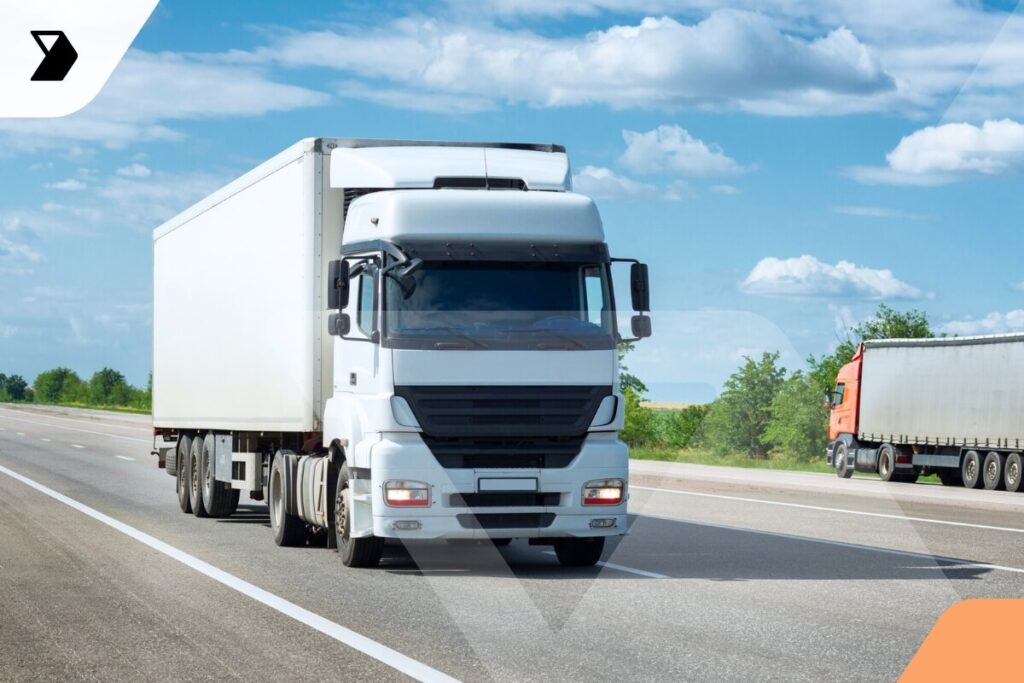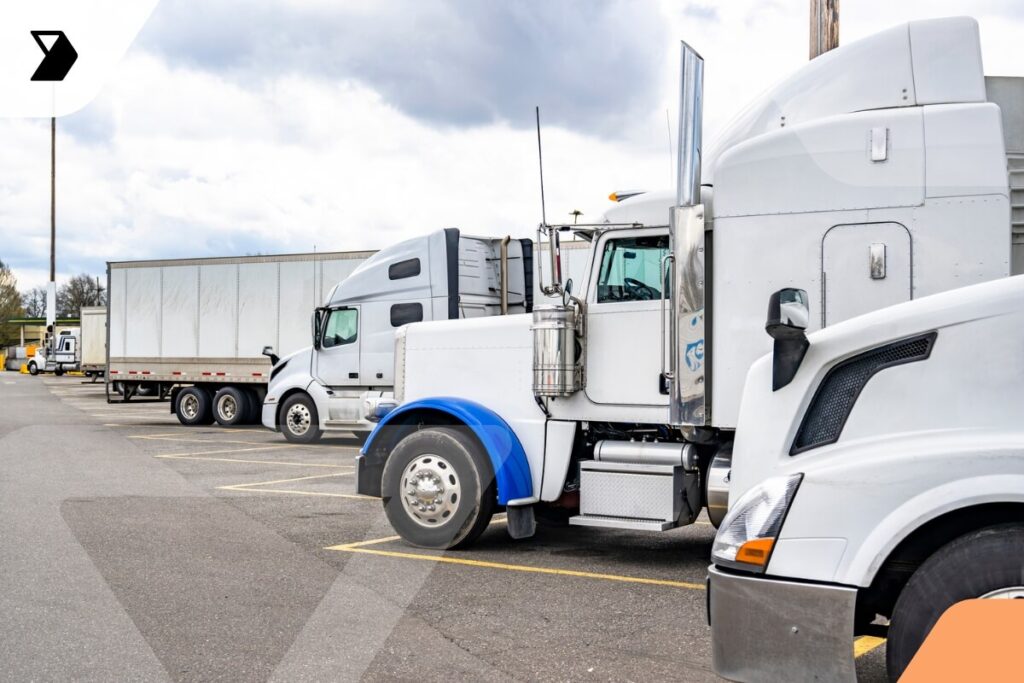How Do Traffic Enforcement Cameras Work?
Despite ongoing efforts to improve driver safety, there are still a large number of truck-related accidents and fatalities that occur each year.
Ready to transform your supply chain?

For example, the latest study from the Federal Motor Carrier Safety Administration (FMCSA) found that truck accidents increased 3 percent from the previous year. What’s more, speeding remains the most frequent cause of accidents.
To combat these trends, government authorities and private companies are looking for viable ways to curb speeding. In turn, they hope to reduce accidents and make our roads safer. One such solution that has been expanding over the last decade is traffic enforcement cameras. Such cameras are now widely deployed across the world. In fact, the global traffic management market is growing 13.6 percent each year and is on pace to reach a staggering $57.9 billion by 2024.
Like it or not, intelligent cameras are the future of traffic enforcement. They will continue to proliferate in the coming years. They’re cost-effective, easy to deploy, and can have a positive impact on communities. For this reason, all administrators should be up to speed on how traffic enforcement cameras work, what they’re used for, how to operate them, and more.
With that in mind, let’s take a look at the ins and outs of traffic enforcement cameras. You’ll get a better idea of this important new piece of technology and how it is impacting our roads.
What Are Traffic Enforcement Cameras?
A traffic enforcement camera—or road safety camera—is a device that’s used to capture vehicle movement and record routine traffic violations.
Traffic enforcement systems can be installed on buildings, lighting fixtures, or roadside poles. They can also be embedded in roads.
There are two types of traffic enforcement cameras that are commonly used today. One detects red light violations and another detects speeding violations.
Are Traffic Enforcement Cameras Legal?
According to the Governors Highway Safety Association (GHSA), 13 states have passed laws that prohibit speed cameras while 28 states have no law addressing speed cameras. The rest either permit speed cameras or restrict their use. As of right now, 12 states—including the District of Columbia and the U.S. Virgin Islands—are using speed cameras to make roads safer.
Further, 20 states and D.C. allow some red-light camera use while 11 states and D.C. allow full use. Nine states and the Virgin Islands allow limited use while eight states restrict them. Twenty-one states have no law restricting enforcement.
The GHSA offers a full state-by-state breakdown of traffic enforcement camera policies on their website.
For example, Massachusetts is one state that is actively trying to move forward with traffic enforcement cameras. Just recently, a bill was introduced that would allow communities to implement their own cameras where they want. However, the bill has since stalled in the state Senate.
“In many municipalities today, the crush of traffic makes it impossible for local police to adequately enforce the traffic laws,” explains Massachusetts Sen. Will Brownsberger, who backed the bill. “Road safety is deteriorating as too many motorists push red lights, exceed speed limits on residential streets and block congested intersections. Automated enforcement using traffic cameras can help.”
It’s worth noting, that—even in states where speeding and red light cameras are legal—residents can challenge tickets, which can get thrown out. For example, cameras can be difficult for drivers to see.
How Do Traffic Enforcement Cameras Work?
Traffic enforcement cameras tend to vary depending on the manufacturer and the make and model of their system. However, the concept tends to be similar across the board.
Speeding cameras work using either embedded road sensors or radar detection systems. When the camera detects an infraction, it will record an image of the moving vehicle—including its license plate number. The camera will also record other relevant data, including:
- The time and date of the offense
- The location of the offense
- The speed of the vehicle
- The direction the vehicle was heading
Cameras can detect moving vehicles even when they are in a line of traffic or in heavily congested areas. There is a misconception, too, that a driver can avoid detection by changing lanes. But cameras and sensors can actually monitor multiple lanes at a time, preventing drivers from gaming the system.
Similarly to a speeding camera, red light cameras usually only record data when an infraction occurs—such as when a car enters an intersection during a red light. The cameras are idle the rest of the time.
Who Controls Traffic Enforcement Cameras?
Contrary to popular belief, government agencies do not typically control or even operate traffic enforcement cameras. In most cases, agencies partner with third-party technology providers to install and manage traffic enforcement devices. Who knew?
As such, law enforcement typically has to request or demand data from third-party traffic technology providers. But they only do this when it’s needed, which is usually in the event of a severe accident or criminal investigation. Managing companies usually are the ones that process low-level traffic violations.
Right now, there are many ongoing debates across the U.S. regarding who has control over traffic management systems and data—including management, storage, and access. And in some places, there are conflicts occurring between state and local governments regarding their usage.
For example, Dayton, Ohio recently scaled back its fixed red light and speed detection systems following a lengthy legal battle with the state government. After modifying their program to only focus on school zones, violations dropped considerably. Photo enforcement citations peaked at 8,949 in May 2019 and fell to just 609 in September 2019 after the change.
Using On-Board Cameras to Improve Driver Behavior
In addition to the public use of roadside traffic enforcement cameras, a growing number of trucking and logistics companies are installing on-board surveillance systems in cabins to monitor the behavior of their drivers.
The goal in doing so is to ensure that operators adhere to basic safety requirements while behind the wheel. For example, cameras can detect when operators close their eyes, use their mobile devices while driving, or engage in road rage with other drivers on the road. Cameras can also be facing the road, too, to provide footage of driving patterns that would otherwise be difficult to transmit through on-board telematics systems.
Not all companies are using on-board cameras, however. This gives drivers the choice of whether or not they want to work for a company that promotes this type of practice. However, it’s safe to say that this is quickly becoming the new norm in the trucking industry. In large part, this is because cameras are increasingly more affordable and easier to deploy. Moving forward, we expect that many more companies will start to use cameras to keep drivers operating at their best performance levels and reduce accidents.
Are On-Board Cameras Right for You?
For now, companies should proceed with caution before installing on-board cameras, as doing so could upset some drivers—particularly those who have been on the road for a while. A less invasive technology to consider is telematics, which can provide a wealth of data on driver behaviors in a relatively unobtrusive way.
The hope is that moving forward, on-board cameras will become less invasive. With technologies like AI, cameras may soon reach a point where—like roadside cameras—they only activate when a driver commits a violation or starts to nod off. We are still years away from reaching this point, however.
It remains to be seen how traffic enforcement cameras will impact our nation’s roads. But it appears as though we will see more cameras as we move further into the future.
This post was written by Justin Reynolds. Justin is a freelance writer who enjoys telling stories about how technology, science, and creativity can help workers be more productive. In his spare time, he likes seeing or playing live music, hiking, and traveling.
Continue reading
Ready to transform your supply chain?
Increase efficiency and productivity. Say goodbye to delays, handwriting errors, and time-intensive manual data entry.



